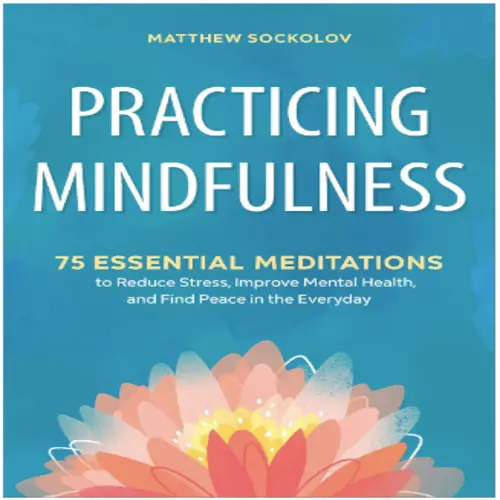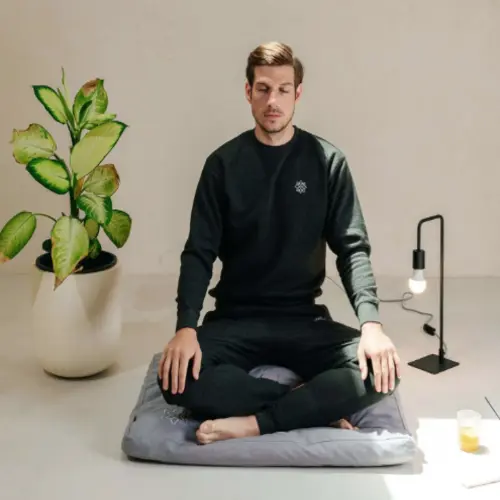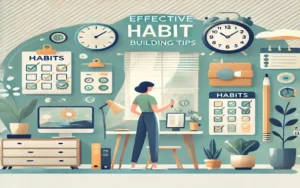Are you feeling overwhelmed by the chaos of daily life? You’re not alone. I once found myself drowning in deadlines and distractions, longing for just a moment of peace. That’s when I discovered the power of mindfulness techniques. What if I told you that simple practices, like mindful breathing or a quick meditation, could transform your day? Imagine finding calm in the storm, even during your busiest moments. In this guide, we’ll explore actionable steps to help you reclaim your tranquility and navigate life’s challenges with ease. Ready to embrace a calmer, more centered you? Let’s dive in!
Understanding Mindfulness
Do you ever feel like life is racing by, and you’re sprinting just to keep up? Like there’s a constant noise in your mind—thoughts about what’s next, regrets about what you could’ve done differently, worries that never seem to quiet down. If this sounds familiar, mindfulness might be exactly what you need. It’s like hitting a “pause” button for your mind, giving you a chance to step back and take a breath. Imagine being able to find calm, no matter what’s happening around you, and feeling fully present, grounded, and at peace, even just for a few moments each day.
Why Mindfulness Matters
Life today often feels like a marathon. We’re juggling careers, relationships, goals, and endless to-do lists. It’s easy to slip into autopilot mode, just going through the motions without really feeling present. But what if there was a way to change that? Mindfulness is all about making that shift—training yourself to focus fully on the present moment without getting caught up in the usual rush.
Research even shows that practicing mindfulness can have a profound impact on both mental and physical health. It reduces stress, boosts mood, and helps us react to life’s ups and downs in a way that’s calmer and more centered. Dr. Jon Kabat-Zinn, the founder of mindfulness-based stress reduction (MBSR), says, “Mindfulness means paying attention in a particular way: on purpose, in the present moment, and non-judgmentally.” In other words, it’s about noticing what’s happening right now, without judging it as good or bad—just being present and accepting.
How Mindfulness Helps You Cope with Stress
Stress isn’t just in your head—it affects your body too. When you’re constantly stressed, your body is in “fight or flight” mode, which can lead to everything from headaches and tension to more serious health issues over time. Mindfulness can help break that cycle. By teaching your mind to focus on the here and now, you can gradually train your body to relax, too. Over time, you’ll find yourself becoming more resilient, able to handle stress with a sense of calm and clarity.
Personal Story: A Mindfulness Journey
I remember when I first tried mindfulness. I was feeling overwhelmed with work and personal responsibilities, and I was constantly distracted. My thoughts would race ahead of me, and I felt drained. A friend suggested I try a simple mindfulness technique: focusing on my breathing for just one minute whenever I felt anxious. At first, I thought, “How can something so small make a difference?” But I decided to give it a try.
To my surprise, taking that one mindful minute was like flipping a switch in my mind. I felt grounded, as if all the noise around me had been turned down just a little. That single minute became two, then five, and eventually, I built a daily mindfulness practice. It wasn’t about changing my whole life at once—it was about taking small steps to create moments of calm in a busy day.
A Healthier Body Through Mindfulness
You might be wondering, “How does something so simple have such a powerful effect on the body?” Well, the benefits are more than mental. Mindfulness has real, physical impacts that can help us lead healthier, more resilient lives.
- Lower Your Blood Pressure, Boost Your Calm: Stress isn’t just in your head; it affects your entire body, raising blood pressure and keeping your nervous system on edge. Research has shown that mindful breathing can signal your body to slow down, helping to lower blood pressure over time. If you often feel tense, try this: close your eyes, inhale deeply, and exhale slowly. Repeat this for five minutes, focusing on each breath. This simple practice can lower your blood pressure by calming your entire nervous system—bringing your body and mind back to balance.
- Strengthen Your Immune System: Did you know that your mindset can impact your immune system? Studies have found that regular mindfulness practice strengthens immune response, making you more resilient against illnesses. Imagine that—just a few minutes of mindful breathing each day could mean fewer sick days and a stronger body. Think of mindfulness as a daily “vitamin” for your immune system. Just like you’d take a supplement, set aside a few minutes each day for mindful breathing or meditation. Over time, this practice can fortify your health, helping you face each day with strength and vitality.
Key Principles of Mindfulness for Managing Stress
Mindfulness isn’t about becoming a different person; it’s about building awareness of yourself and the present moment. A few core principles make this practice both powerful and approachable:
Non-Judgment: One of the biggest challenges of mindfulness is learning not to judge your thoughts and feelings. Imagine looking at your mind like an observer—watching thoughts come and go, but without labeling them as “good” or “bad.” This helps to reduce self-criticism and anxiety, allowing you to approach life with more compassion and understanding.
Patience: In mindfulness, patience means allowing each moment to unfold naturally. In our fast-paced world, it’s easy to rush from one thing to the next, but mindfulness teaches us to slow down. Practicing patience can transform how you experience each moment, helping you feel more connected to life.
Beginner’s Mind: Approaching each day with “beginner’s mind” means seeing life as if for the first time. This perspective encourages curiosity and openness, allowing you to notice things that might normally be overlooked. Imagine looking at a sunset, tasting your morning coffee, or listening to your favorite song with the fresh perspective of someone experiencing it for the first time.
Trust in Yourself: Mindfulness involves building trust in your own ability to handle life’s experiences. You learn to rely on your own inner resources and wisdom. Trust helps you face life’s uncertainties with a sense of calm and resilience, reminding you that you’re capable of handling whatever comes your way.
Acceptance: Acceptance means letting go of the urge to change what’s already happening. Instead of resisting or struggling against challenges, mindfulness teaches you to find peace with the present moment. This doesn’t mean giving up—it simply means accepting reality as it is before taking steps forward.
Think of mindfulness as a daily investment in both your mental and physical health. Every small step—whether it’s taking a mindful breath before responding to an email, or savoring a meal without distractions—builds resilience, allowing you to face life’s challenges with a little more grace and calm.
Mindfulness is a journey. Start with one minute each day, slowly expanding as you become more comfortable with the practice. Remember, it’s not about doing it perfectly—it’s about making the effort to come back to the present moment, again and again. And in those moments of stillness, you’ll find a powerful tool for reducing stress, reconnecting with yourself, and navigating the chaos of life with a renewed sense of purpose.
Practical Mindfulness Techniques for Everyday Life
Ever feel like life is pulling you in a hundred directions at once? Finding a moment of peace can feel like searching for a needle in a haystack. But mindfulness isn’t about escaping life’s demands; it’s about meeting them with a calm, centered mind. Imagine if just a few minutes a day could help you feel more grounded, relaxed, and in control—sounds good, right? Let’s dive into practical ways to bring a little more mindfulness into every day.
Breathing Exercises for Relaxation
Breathing is something we do without thinking—yet it’s also one of the most powerful tools for relaxation. Deep breathing can calm your nervous system, lower your stress, and bring you back to the present. Here’s a quick, step-by-step guide to get you started:
- Find a Comfortable Position: Sit down with your back straight, or lie down if you prefer. Place one hand on your chest and the other on your belly.
- Inhale Deeply Through Your Nose: Breathe in slowly and deeply, letting your belly rise as you draw in the breath. Imagine filling your lungs with fresh, calming air.
- Pause: Hold your breath for a count of four. This short pause helps your mind and body reset.
- Exhale Slowly Through Your Mouth: As you release the breath, imagine letting go of stress and tension. Feel your shoulders and muscles relax.
Deep breathing doesn’t just slow your heart rate; it sends signals to your brain to relax, activating the “rest and digest” system in your body. The next time you feel overwhelmed, try this exercise. It only takes a minute or two, but it can make a big difference in how you feel.
Mindfulness Exercises for Stress Management
When stress strikes, mindfulness can be an anchor, pulling us back to the present when our minds are swept away in worries and “what-ifs.” Stress management doesn’t have to be complicated or time-consuming; sometimes, a simple exercise can reset our mindset in just a few moments. Here’s how you can bring mindfulness into your day to keep stress at bay.
The Body Scan Exercise
The body scan is a fantastic way to reconnect with your physical self and release tension you might not even realize you’re holding. Stress often manifests in our bodies as tight muscles, shallow breathing, or an overall feeling of unease.
How to do a Body Scan:
- Find a comfortable position: Lie down or sit comfortably, closing your eyes if that feels right.
- Start with your toes: Bring your attention to your toes. Notice any sensations—warmth, coolness, tingling, or even tension.
- Move upward slowly: Shift your attention from your feet to your ankles, legs, hips, and continue slowly up through your body, noticing any areas of tension.
- Release tension as you go: If you find any tension or discomfort, take a deep breath, and as you exhale, imagine that tension melting away.
A body scan can take anywhere from five minutes to half an hour, depending on how thorough you want to be. It’s a powerful way to bring mindfulness to the body and can be incredibly calming, especially at the end of a long day.
The “Three Good Things” Reflection
When stress hits, our minds tend to fixate on what’s going wrong. The “Three Good Things” exercise is a simple, science-backed way to counter that negative spiral and shift your focus to the positive.
How to Practice “Three Good Things”:
- At the end of each day, take a moment to reflect on three positive things that happened, no matter how small. Maybe you enjoyed a great cup of coffee, heard a song that lifted your spirits, or received a kind text from a friend.
- Write down each one in a journal or simply reflect on them quietly. Take a moment to appreciate each event and the positive feelings it brought.
Psychologists have found that reflecting on positive experiences can significantly lower stress levels over time and even improve overall happiness. This exercise takes just a few minutes but can change your perspective on the day, helping you focus on gratitude and grounding yourself in positive emotions.
The "STOP" Technique
The STOP technique is a practical tool you can use anytime you feel overwhelmed or stressed. This quick exercise encourages you to pause, check in with yourself, and approach the moment with awareness rather than reaction.
How to Use the STOP Technique:
- S: Stop whatever you’re doing. Take a brief pause.
- T: Take a breath. Breathe deeply, inhaling for a count of four and exhaling for a count of four.
- O: Observe your thoughts, emotions, and physical sensations. Ask yourself, “What am I feeling right now? Where am I holding tension in my body?”
- P: Proceed with intention. Decide how you want to continue, whether it’s responding calmly, taking another breath, or even walking away for a moment if needed.
This technique helps break the cycle of automatic reactions. Instead of getting swept away by stress, STOP lets you pause and choose a more mindful response.
Mindful Listening
In our busy lives, we often listen only to respond or react, not to truly understand. Mindful listening isn’t just beneficial in personal relationships—it can also lower stress by helping us stay present and engaged with others.
How to Practice Mindful Listening:
- Be fully present: When someone is speaking to you, put aside distractions like your phone or other tasks. Look at them, making eye contact, and focus solely on what they’re saying.
- Listen without interrupting: Let the speaker finish before you respond, and resist the urge to jump in with advice or opinions.
- Observe your reactions: Notice any internal reactions, like wanting to agree or disagree, and gently let them go. Focus instead on understanding their words and emotions.
Mindful listening can help you connect more deeply with others and create a calmer, more meaningful exchange. It also helps to prevent misunderstandings and reduces the stress that often accompanies conflict.
Mindful Journaling
Writing down your thoughts and emotions is a mindful exercise that brings clarity and can relieve stress. When you put pen to paper, you’re actively processing your emotions, often gaining insight into why you’re feeling a certain way.
How to Practice Mindful Journaling:
- Set aside time: Try dedicating just five to ten minutes daily or whenever you feel stressed. Write about what’s on your mind without filtering your thoughts.
- Focus on how you feel: Rather than just writing down events, dig into your emotions. Are you feeling overwhelmed? Anxious? Excited?
- Reflect on your thoughts: After writing, take a moment to read what you’ve written and notice if any patterns or insights emerge.
Mindful journaling can be both grounding and therapeutic. Over time, it may even reveal recurring stressors or habits, helping you become more proactive in managing stress.
Mindfulness exercises like these remind us that stress doesn’t have to control our lives. With tools like the body scan, mindful journaling, and techniques like STOP, you have ways to bring calm and presence to the busiest, most challenging days. Each exercise is a small step toward managing stress, one mindful moment at a time.
Mindful Living: Incorporating Mindfulness into Daily Activities
Mindfulness doesn’t have to be a separate task on your to-do list. In fact, some of the most effective mindfulness practices happen right in the middle of your day-to-day activities. This is what we call mindful living—making the choice to be fully present, whatever you’re doing.
- Eating Mindfully: Instead of rushing through a meal, try eating slowly. Notice the taste, texture, and aroma of each bite. Put down your fork between bites, savoring the experience. Not only will this make your meals more enjoyable, but it can also improve digestion and help prevent overeating.
- Mindful Commuting: Commuting is often stressful, but you can turn it into a mindful practice. Notice the scenery, the movement of other cars, or the sound of the train. If you drive, focus on your breathing at stoplights or listen to calming music to stay centered.
- Mindfulness in Daily Chores: Even the most mundane tasks can be opportunities for mindfulness. Washing dishes? Feel the warm water on your hands, notice the sound of the water, and watch the bubbles. Folding laundry? Focus on the texture of the fabric and the rhythm of folding each piece. This makes daily chores less tedious and turns them into mini mindfulness breaks.
Mindfulness isn’t about perfection; it’s about presence. It’s about slowing down, noticing, and choosing to be fully engaged in the moment. Whether you’re breathing deeply, taking a mindful walk, or simply eating lunch without distractions, each mindful action is a step toward a calmer, more centered you. Remember, mindfulness is a practice, not a destination. Keep returning to these techniques, and let each moment of mindfulness guide you toward a more peaceful life.
Mindfulness Techniques for Finding Calm in Chaos
Ever feel like life’s whirlwind of tasks, notifications, and conversations never seems to stop? You’re not alone. Chaos, whether at work or at home, can make it hard to breathe—let alone focus. But what if there was a way to bring calm to this chaos? Mindfulness is your doorway to clarity and peace, even when everything around you feels overwhelming. Let’s dive into how you can tap into its power.
Mindfulness for Stress Relief in Workplace Settings
Work is often the epicenter of stress. You might feel pressure from tight deadlines, competing priorities, or simply the endless stream of tasks. In moments like these, staying present can make all the difference. When your mind is racing, try “micro-mindfulness” techniques:
Breathing Pauses: Whenever you feel stress building up, pause for a minute. Take a slow, deep breath in, hold it for a few seconds, and exhale slowly. Repeat a few times to reset.
Sensory Check-In: Choose one sense—hearing, sight, or touch—and focus on it completely for 10-15 seconds. Maybe you hear the hum of an air conditioner or feel the warmth of your coffee mug. This simple grounding exercise can bring you back to the present.
The 5-4-3-2-1 Method: Name five things you see, four you feel, three you hear, two you smell, and one you taste. This mindful exercise distracts your mind from stress and sharpens your focus on the now.
These simple strategies can turn a hectic day into something more manageable. By staying present, you’ll find you can respond thoughtfully rather than reacting impulsively to workplace challenges.
Guided Mindfulness Practices for Workplace Stress Relief
Consider setting aside just five minutes a day for a guided mindfulness exercise. Many apps, like Headspace or Calm, offer short, guided practices specifically for work settings. This quick mindfulness moment can:
- Help you ease tension
- Improve your focus
- Make you feel more resilient
Even on the busiest days, five minutes of mindfulness can be transformative. Remember, the goal isn’t to have a “perfect” practice; it’s to find peace, even if it’s brief.
Mindfulness for Family Dynamics
Family life can be chaotic, and when emotions run high, it’s easy to lose patience. When things start heating up, try a mindful approach instead. Here’s how you can use mindfulness to nurture a calmer family environment:
Pause Before Reacting: When your child or partner says something that triggers you, take a deep breath before responding. A pause lets you choose your words and actions more mindfully, keeping conversations constructive.
Listening Deeply: True listening isn’t just hearing words; it’s being present with the person speaking. Set aside distractions and focus on what your family member is really trying to convey. This mindful attention can diffuse tension and show them they’re valued.
Sharing Moments of Gratitude: Mindfulness isn’t just about managing stress; it’s also about noticing the good. Try sharing one thing you’re grateful for every day with your family. This practice can transform the energy in your home, reminding everyone of what truly matters.
Strategies for Fostering Calm During Family Chaos
Family life will always have its busy days and challenging moments. Here are a few more strategies to help you find balance:
Mindful Family Mornings: Set the tone for a peaceful day by starting your mornings mindfully. Even five minutes of calm together can reduce morning stress for everyone.
End-of-Day Reflection: Encourage each family member to reflect on their day before bed. This not only fosters mindfulness but strengthens family bonds as you listen to each other’s experiences.
Modeling Calm: Children, especially, learn from example. When they see you managing stress calmly, they’re more likely to mirror those behaviors. Show them how taking a moment to breathe can transform any moment.
Mindfulness is not a one-time solution; it’s a journey. Bringing it into your daily life—at work or at home—can transform how you handle chaos. When we pause, listen, and breathe, we create pockets of calm that ripple outward. Start with one small practice. Watch it make a difference, then add another. Little by little, you’ll find that even in the most chaotic moments, there is calm within reach.
Creating a Sustainable Mindfulness Routine
Ever tried building a routine, only to feel defeated when it doesn’t stick? You’re not alone. Many of us want to make mindfulness a habit but struggle to keep it going. What if you could create a mindfulness routine that feels achievable and, most importantly, sustainable? Here, we’ll explore practical ways to set mindfulness goals, integrate mindfulness into your daily life, and keep that sense of calm for the long haul.
Setting Realistic Mindfulness Goals
Setting big goals might seem inspiring, but starting small can actually set you up for long-term success. The truth is, mindfulness doesn’t need to look like an hour-long meditation on a mountain top; it can be as simple as a few moments of focused breathing in your day. Ask yourself:
What do I want from mindfulness? Is it more peace, better focus, or less stress? Start with a goal that speaks to you personally.
How much time can I genuinely commit? Start with as little as five minutes a day. The best mindfulness routines grow out of small, consistent steps.
For instance, a friend of mine started with just one mindful minute each morning. She’d breathe deeply and think of one thing she was grateful for. Over time, she found herself naturally adding more moments throughout her day, and that one minute grew into a daily practice that she now couldn’t imagine skipping.
Tracking Progress and Staying Motivated
Tracking progress is a game-changer. You can keep it simple—try a mindfulness journal, or note down moments when mindfulness helped you during the day. Reflect on things like:
- Did I feel less stressed today?
- Did I react more calmly to challenges?
There’s real science behind this. Studies show that people who track their progress feel more accomplished and motivated to continue. As you log your experiences, you’ll notice how even a small practice can bring about positive changes.
Consider rewarding yourself for sticking to your goals. Perhaps treat yourself to a new journal or app after reaching a milestone. By celebrating your progress, you reinforce the habit and keep your motivation strong.
Incorporating Mindfulness Techniques into Your Daily Life
Mindfulness doesn’t have to disrupt your day. Instead, think of ways to weave it into moments you already have:
Mindful Mornings: As soon as you wake up, take a moment to breathe deeply and focus on one intention for the day. This can be as simple as, “Today, I will be patient,” or “Today, I will find joy in small moments.”
Mindful Eating: Try a mindful eating exercise at one meal a day. Focus on the texture, taste, and smell of each bite. Not only does this help you appreciate your food more, but studies show mindful eating can also help with digestion and satisfaction.
Mindful Walking: Whether it’s on your way to work or just down the hallway, notice the sensation of each step. Feel your feet on the ground, listen to your surroundings, and bring yourself into the present moment.
The more you sprinkle these moments of mindfulness throughout your day, the easier it becomes to make it a natural part of your routine.
Tips for Practicing Mindfulness Throughout the Day
Building a sustainable practice means keeping it light and enjoyable. Here are a few tips to help you stay on track:
Set Reminders: Use your phone or sticky notes to remind you to pause and be mindful. A notification at lunch or a sticky note on your bathroom mirror can gently bring you back to the present.
Pair Mindfulness with Daily Habits: Attach mindfulness to activities you already do, like brushing your teeth or having your morning coffee. By associating mindfulness with existing habits, it becomes a natural part of your day.
Forgive Yourself for Missed Days: Don’t be hard on yourself if you miss a day (or even a few). Consistency is key, but it’s the effort over time that makes a difference. Be kind to yourself—mindfulness is a journey, not a race.
Creating a sustainable mindfulness routine doesn’t require perfection. It’s about finding those small moments where you can pause, breathe, and reconnect with yourself. Start with a few achievable goals, track your progress, and find ways to integrate mindfulness into your everyday life. Remember, every mindful moment you create is a gift to yourself. Stick with it, and watch as a few minutes of peace start to transform your entire day.
Resources for Further Exploration of Mindfulness
Looking to dive even deeper into mindfulness? Check out our curated list of additional resources to enhance your journey to calm! From must-have products that support your practice to insightful articles that expand your understanding, these resources are here to guide you every step of the way. Embrace the tools and knowledge you need to cultivate serenity in your life, let’s explore together!
Recommended Resources on Mindfulness Techniques
The Five Minute Journal

Cultivating gratitude and mindfulness, the 5 Minute Journal encourages you to appreciate your life for just five minutes each day. Designed for both men and women, this journal fosters positive manifestation and boosts confidence.
Practicing Mindfulness

Mindfulness is a proven way to reduce stress, anxiety, and boost resilience. This book, created by the founder of One Mind Dharma, includes 75 exercises designed to ground you, uplift your mood, and foster a sense of gratitude and kindness, even on difficult days
Mindful & Modern Zabuton Meditation Mat

The Mindful & Modern Zabuton Meditation Mat provides comfort and support for your meditation practice. Its cotton filling cushions your knees and legs, helping you maintain focus and tranquility while meditating.
Rylaxtonex Meditation Systems

This Meditation System offers a holistic approach to mindfulness, combining sound baths, chakra healing, and stress relief techniques. Ideal for yoga and relaxation, it enhances your meditation experience.
Recommended Articles: Ultimate Guide to Stress Relief and Relaxation Techniques
Frequently Asked Questions about Mindfulness Techniques: How to Find Calm in Chaos
Got questions about finding calm in the chaos? You’re in the right place! Our FAQ section dives deep into mindfulness techniques, offering practical answers and insights to help you navigate stress and embrace tranquility. Whether you’re new to mindfulness or looking to deepen your practice, let’s explore together how to cultivate peace in your busy life!
How does mindfulness reduce stress?
Mindfulness helps you manage stress by grounding you in the present, shifting your focus from worries to the here and now. Practicing mindfulness regularly can ease stress responses, lower anxiety, and bring calm during challenging moments.
What are the best mindfulness exercises for beginners?
Begin with simple techniques like deep breathing, body scans, or mindful observation. Each of these practices requires only a few minutes but can effectively anchor you and introduce mindfulness into your daily life.
What are the benefits of mindfulness meditation for mental health?
Mindfulness meditation boosts mental clarity, reduces anxiety, and fosters emotional balance. Regular practice can enhance focus, resilience, and overall mental well-being, helping you navigate life’s stresses with a clearer, more peaceful mindset.
How can I practice mindfulness in my daily routine?
Try incorporating short mindfulness exercises, like mindful eating or breathing breaks, into daily activities. Focus on being fully present during routine tasks like walking or washing dishes to cultivate a mindful approach throughout the day.
Can mindfulness techniques help with managing anxiety?
Yes, mindfulness is especially effective for anxiety. Techniques like mindful breathing and grounding exercises can break cycles of anxious thoughts, helping you find calm and clarity even in chaotic situations.
What are some quick mindfulness exercises to calm stress?
Quick exercises include the “5-4-3-2-1” grounding technique, mindful breathing, or focusing on physical sensations. These methods can help you find immediate calm and stay centered, especially in high-stress moments.
How can I use mindfulness for emotional balance?
Mindfulness can improve emotional regulation by encouraging you to observe feelings without judgment. This helps you respond calmly instead of reacting impulsively, building a balanced emotional response to daily challenges.
Can mindfulness improve focus and productivity?
Yes, mindfulness enhances productivity by improving focus and reducing mental distractions. Brief practices like mindful breathing between tasks can boost clarity and help you approach work with a refreshed mindset.
What are some calming mindfulness practices for difficult days?
On tough days, try calming exercises like deep breathing, body scans, or mindful journaling. These practices can help you find inner peace, reduce stress, and develop a compassionate perspective on your challenges.
How can mindfulness support mental health and well-being?
Mindfulness offers a holistic approach to mental health, helping to reduce symptoms of stress, anxiety, and depression. By focusing on the present, mindfulness promotes greater self-awareness, emotional resilience, and overall wellness.




